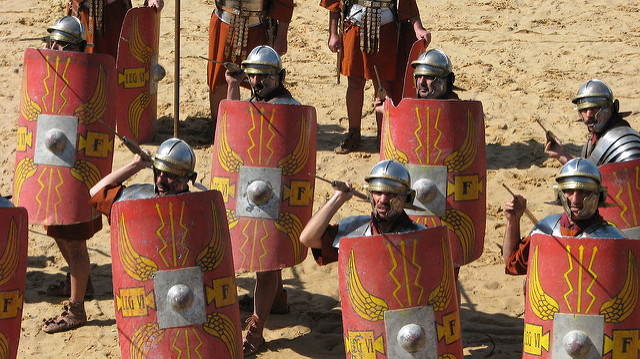
The Complete Roman Army, by Adrian Goldsworthy, provides some background on logistics.
Logistics
The Romans had an equation on how far an animal could go before it would eat its weight in food. This would provide a way to calculate how much feed would be necessary to move supplies the distance the army planned to travel.
The options for transport over land were mules and draft oxen. Mules were more flexible, could march as fast as the infantry, and had more mobility. Oxen had more power, but were slower, and would typically need roads or at least tracks for travel.
From this text and what I have read elsewhere, the Romans would use large seagoing ships to carry grain and supplies to major ports where they would build a depot. The ships would carry 300 tons, as I recall having read.
River-going ships would carry food and supplies to an interior location for a supply base. These ships would carry about 30 tons.
From those supply bases the Romans would have to carry enough food for their trip or have to set up a supply line from their forward bases to the supply base. This would require a significant amount of animals for the convoys and substantial guards to protect the supply line. Book points out that higher guard requirements existed when fighting mobile foes such as the Parthinians or Persians.
Whether the mobile army carried it supplies with it or had a supply line going back to the supply base required a large number of animals.
The book also points out that the Romans would sometimes establish a major forward base and build up a stock of supplies there. The legions would carry with them only the food they needed for brief forays, which might last one or two weeks. At the end of the foray they would return to the forward base.
At the end of a day’s march, the Army would set up a marching camp, which had a standardized layout so it could be set up quickly. It would have a ditch and a rampart. Not a great defensive position, but it would be sufficient to allow time to rally all the soldiers if there were an attack.
Book estimates that a marching camp could be set up in two or three hours. In the morning it would be disassembled. Text points out this is the equivalent to “digging in” for an infantryman today. Before you go to sleep you set up a foxhole and a defensive perimeter.